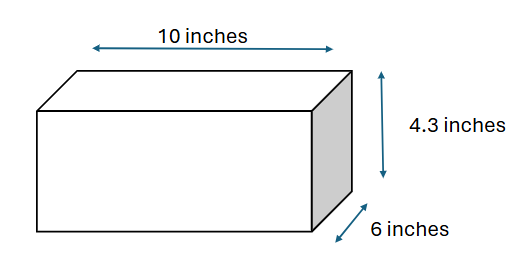Understanding SBAC Math Assessment
The Smarter Balanced Assessment Consortium (SBAC) Mathematics Assessment isn't just another standardized test—it's a comprehensive evaluation designed to measure your child's mathematical reasoning, problem-solving abilities, and conceptual understanding. Unlike traditional tests that focus on memorized procedures, SBAC emphasizes mathematical practices that mirror real-world problem-solving.
What is the SBAC Math Test? [Essential Overview]
The SBAC Math assessment is meticulously designed to measure students' progress toward Common Core mathematical standards. This isn't about memorization—it's about demonstrating authentic mathematical thinking that translates to real-world applications.
What makes this assessment particularly powerful is its adaptive format. As students progress through the test, the difficulty adjusts based on their performance, providing a more accurate picture of each student's capabilities than fixed-format assessments.
In the SBAC Math Test, a claim is a broad area of math skills that students are expected to demonstrate. There are four main claims for math:
- Concepts and Procedures – Using math facts and methods accurately.
- Problem Solving – Solving real-world and mathematical problems.
- Communicating Reasoning – Explaining and justifying your math thinking.
- Modeling and Data Analysis – Using math to represent and analyze real situations.
In simple terms, a claim tells what type of math skill the question is checking.
Support Every Child’s Success
Up to 3 kids. One price. Unlimited learning.
SBAC Math Test Structure: What Parents Need to Know
Computer Adaptive Test (CAT)
The SBAC Math Test is taken on a computer, and it adapts to you. If you answer questions correctly, the next ones will be harder. If you get questions wrong, they’ll get a little easier. This helps show what you really know and can do in math.
Performance Tasks (PTs)
In addition to the regular test, there’s a special part called the Performance Task. In this section, you solve a real-life math problem step by step. These problems test how well you can:
- Use what you’ve learned in math
- Think deeply and explain your ideas
- Solve problems in more than one way
For grades 3–5, a performance task usually has 4–6 questions. Some are checked by the computer, and some are scored by teachers. This format is also reflected in the SBAC ELA Test.
SBAC Math Practice Test Questions-5th Grade
SBAC Math Practice Test - Sample Question 1
Mr. Jones has 6 loaves of bread. He cuts each loaf into 4 equal pieces. How many pieces of bread will Mr. Jones have? If he sells 2/3 of these pieces, how many pieces will he sell?
TestPrep-Online Tutor's Tip:
"I always tell my students to use the "parts method" for fraction problems. Imagine dividing 24 pieces into 3 equal groups of 8. If Mr. Jones sells 2 out of those 3 groups, he sells 16 pieces. This visualization makes fractions concrete rather than abstract, and you can apply this thinking to any fraction problem you encounter."
SBAC Math Practice Test- Sample Question 2

What is the volume of a rectangular prism with a length of 10 inches, a width of 6 inches, and a height of 4.3 inches?
TestPrep-Online Tutor's Tip:
"I teach my students the "layer method" for visualizing volume. First, find the area of the base (length × width = 60 square inches). This tells you how many unit cubes fit in one layer. Then multiply by the height (4.3) to see how many layers you can stack. This method connects 2D area concepts to 3D volume, making the jump from flat shapes to solid shapes much clearer."
SBAC Math Practice Test- Sample Question 3
With what number must 4.8932 be multiplied to obtain the number 48,932?
TestPrep-Online Tutor's Tip:
"I teach students to think of the decimal point as a "sliding door" in our number system. When you multiply by powers of 10, you're sliding that door to the right—each zero in your multiplier slides it one more place. This mental model works for division too (sliding left). Once you master this concept, unit conversions in science, currency exchange, and data interpretation become much more intuitive."
SBAC Math Practice Test- Sample Question 4
A box contains 44 books. 3/4 of the books are fiction. Of those, 2/3 are novels. How many novels are in the box?
TestPrep-Online Tutor's Tip:
"I always have my students draw what I call a "fraction tree" for problems like this. Start with the whole (44 books), branch into the first division (fiction vs. non-fiction), then branch again (novels vs. other fiction). This visual approach prevents you from getting lost in the calculations and helps you see the logical structure of complex problems. You'll use this same thinking pattern in algebra, statistics, and even when analyzing news articles or making financial decisions."
Practice makes perfect—and we make practice easy.
Check out these free SBAC-style ELA sample questions for Grades 3–8 practice from other popular assessments:
SBAC Math Practice Test- Sample Question 5
Danny calculated 1.2 × 0.3 = 0.36. What mistake did Danny make?
TestPrep-Online Tutor's Tip:
"I teach my students the "decimal dance"—a systematic way to handle decimal multiplication. First, ignore the decimals and multiply normally. Then, count the total decimal places in both numbers you multiplied. Finally, put the decimal point that many places from the right in your answer. This method eliminates guesswork and builds reliable calculation habits. I also emphasize the "reasonableness check"—always ask if your answer makes sense in the context of the problem. This double-checking habit will serve you well in advanced math and in life.."
SBAC Math Practice Test- Sample Question 6
A rectangular garden has a length of 8 1/2 feet and a width of 3 3/4 feet. What is the area in square feet?
TestPrep-Online Tutor's Tip:
"I always tell my students that when working with mixed numbers in multiplication, converting to improper fractions first is like "clearing the clutter" from your workspace. It makes the calculation cleaner and reduces errors. Here's my memory trick: when you see mixed numbers that need to be multiplied, think "convert first, calculate second, convert back third." This systematic approach works for any fraction multiplication problem and builds the foundation for algebraic fraction work you'll encounter later. Plus, understanding area calculations with fractions prepares you for real-world applications like home improvement projects, gardening, and any situation where you need to calculate space or materials."
Unlock every child's potential with one simple membership! Get personalized accounts, hundreds of practice tests, and individual progress tracking for up to THREE children - all at one family-friendly price. Why juggle multiple subscriptions when one can support all your children's academic journeys? JOIN TODAY and watch everyone succeed together!
Calculator and Non-Calculator Sections
Calculator availability varies by grade level on the SBAC math assessment:
- Grades 3-5: Students are not permitted to use calculators for any session of the test.
- Grade 6: Students have access to an embedded online four-function calculator during designated Calculator Available sections.
- Grades 7-8: Students have access to an embedded online scientific calculator during designated Calculator Available sections.
- High School: Students have access to embedded online calculators with scientific, regression, and graphing capabilities during designated Calculator Available sections.
External calculators are not allowed on the test, so students should practice using the approved embedded calculators before test day.
Time Allocations by Grade Level
|
Grade Level |
CAT Questions |
PT Questions |
Total Questions |
CAT Time |
PT Time |
Total Time |
|
Grades 3–5 |
31–34 |
4–6 |
35–40 |
90 min |
60 min |
150 min (2h 30m) |
|
Grades 6–8 |
30–34 |
4–6 |
34–40 |
120 min |
60 min |
180 min (3h) |
|
Grade 11 |
30–34 |
4–6 |
34–40 |
120 min |
90 min |
210 min (3h 30m) |
SBAC Scoring System and Achievement Levels
The SBAC assessments provide scores across three claim areas (Concepts and Procedures, Problem Solving/Modeling and Data Analysis, and Communicating Reasoning). Student performance is evaluated based on achievement levels that indicate their progress toward college and career readiness standards. These scores help educators and parents understand a student's strengths and areas for improvement in mathematics.
Grade-Level SBAC Math Skills: What's Tested When
Math Question Types
The SBAC math assessment utilizes a variety of question formats to measure different aspects of mathematical understanding:
Students select one correct answer from several options. These questions often assess conceptual understanding and procedural fluency
Students must select all correct answers from given options. These questions require deeper analysis and evaluation of multiple mathematical statements
Students match items in a table format, often connecting mathematical concepts, properties, or representations
Students use drag-and-drop functionality to place objects in the correct positions, such as plotting points on a coordinate plane or organizing shapes by their properties
Students enter numerical answers or mathematical expressions directly into provided fields
Students use digital tools to construct mathematical equations or expressions as their responses
Students plot points, draw lines, or create other graphical representations on a coordinate plane
Multi-step problems that require students to apply knowledge and skills to solve complex, real-world scenarios. These tasks typically include multiple related questions and may require students to explain their reasoning
Unlock Full SBAC Math Prep with Family Membership
Proven SBAC Math Practice Test Strategies That Work
Math-Specific Test Preparation Strategies
- Practice regularly with a variety of problem types to build familiarity with the different question formats on the SBAC Math Test
- Focus on conceptual understanding rather than just memorizing procedures. The SBAC Math Assessment emphasizes understanding "why" mathematical procedures work.
- Develop strong problem-solving skills by working through complex, multi-step problems that require application of multiple concepts
- Practice explaining mathematical reasoning in writing, as some questions require students to justify their solutions
How to Approach Different Question Types
- For multiple-choice questions: Read carefully, eliminate obviously incorrect answers, and solve the problem completely rather than looking for shortcuts
- For technology-enhanced items: Practice with drag-and-drop, graphing, and equation editor tools before test day to ensure comfort with these interfaces
- For performance tasks: Read the entire task before beginning, plan your approach, organize your work logically, and check that you've answered all parts of the question
Time Management for Math Sections
- Allocate time based on point values - spend more time on higher-point questions.
- Don't get stuck on difficult problems - mark them for review and come back if time permits
- Pace yourself throughout the test to ensure you have sufficient time for all questions
Frequently Asked Questions About SBAC Math Testing
Calculator allowance depends on grade level. Students in grades 3-5 are not permitted to use calculators for any portion of the test. Students in grades 6-11 have access to embedded calculators during specified Calculator Available sections only
The estimated testing time varies by grade level. For grades 3-5, the Math CAT portion is about 40-60 minutes, and the Math PT is about 60 minutes. For grades 6-11, the Math CAT portion is about 60 minutes, and the Math PT is about 60 minutes. However, the tests are not timed, so students can take the time they need to complete them
The SBAC math test includes multiple question types: multiple-choice, multiple-select, matching tables, drag-and-drop, fill-in-the-blank, equation/expression editor, graphing items, and performance tasks
SBAC math tests are scored using a combination of machine scoring and hand scoring. Multiple-choice and technology-enhanced items are typically machine-scored, while constructed-response items and performance tasks may be hand-scored. Students receive an overall mathematics score as well as scores for specific claim areas.
The SBAC math assessment is administered to students in grades 3-8 and once in high school (typically grade 10 or 11), depending on the state
Yes, the SBAC provides a range of accessibility resources, designated supports, and accommodations for students with disabilities or special needs. These are detailed in the Smarter Balanced Assessment Consortium: Usability, Accessibility, and Accommodations Guidelines



